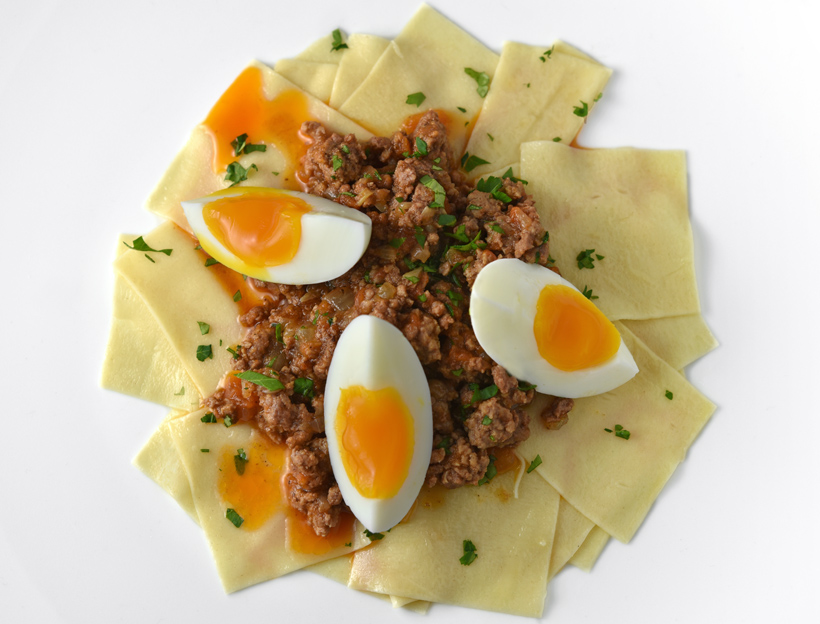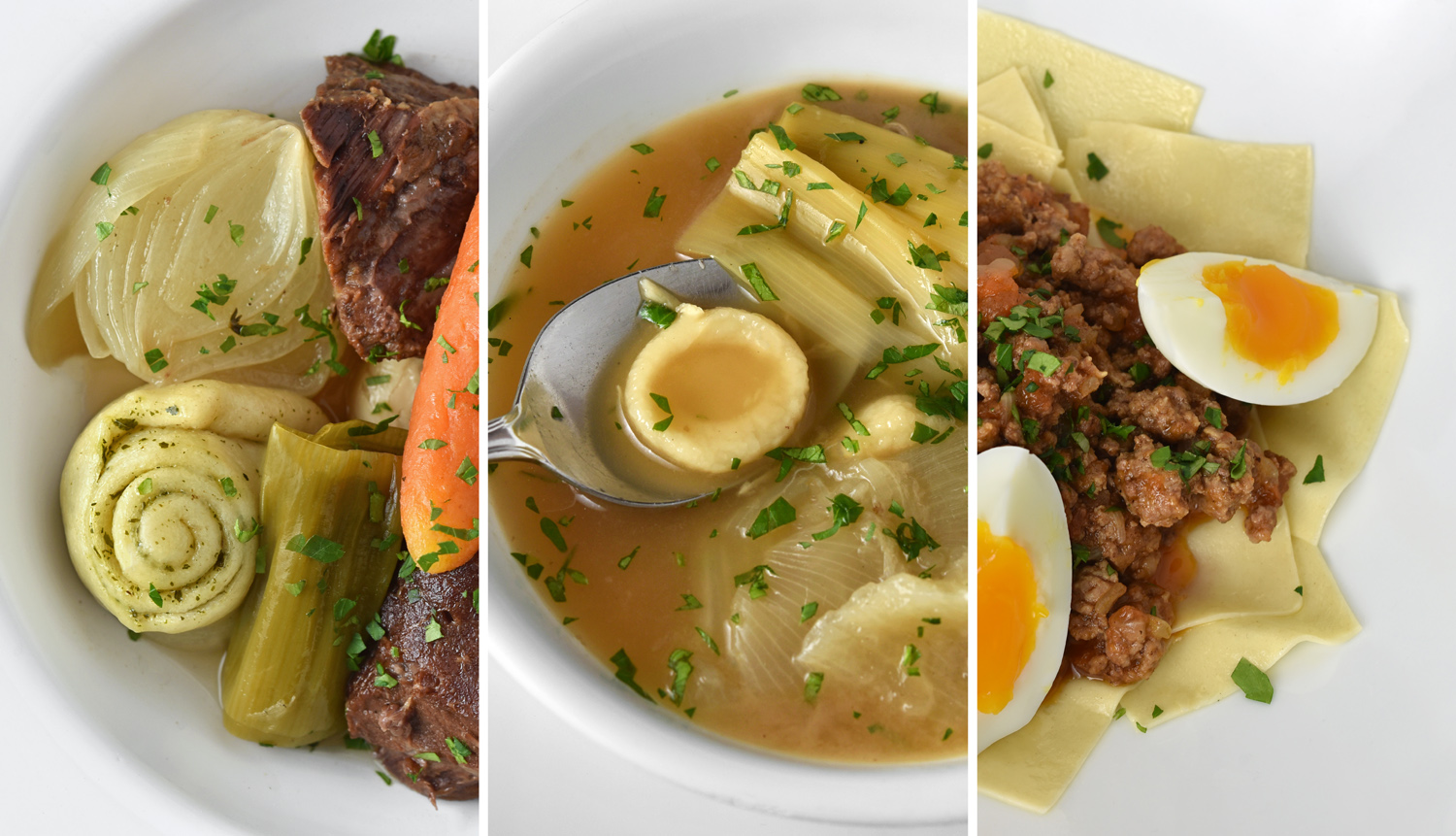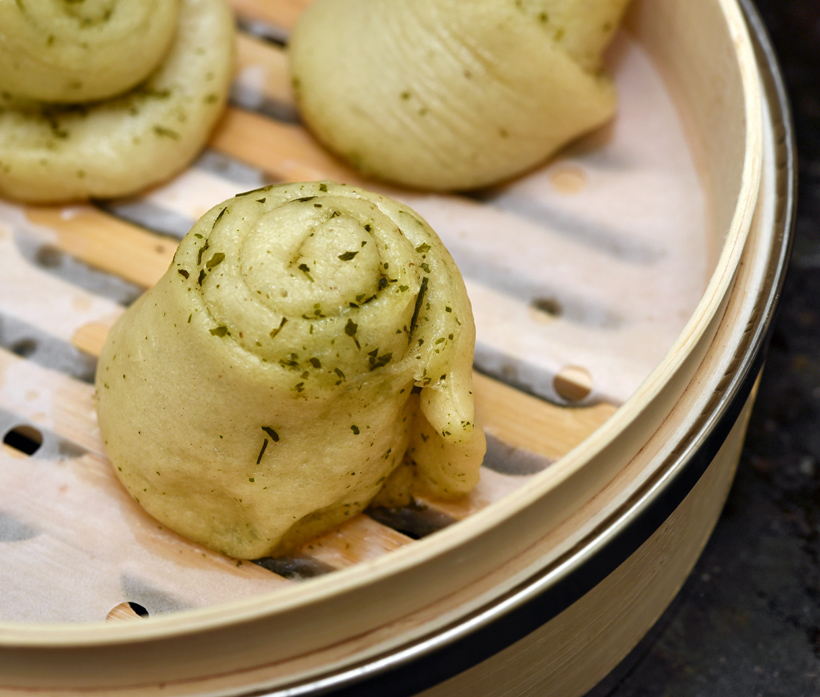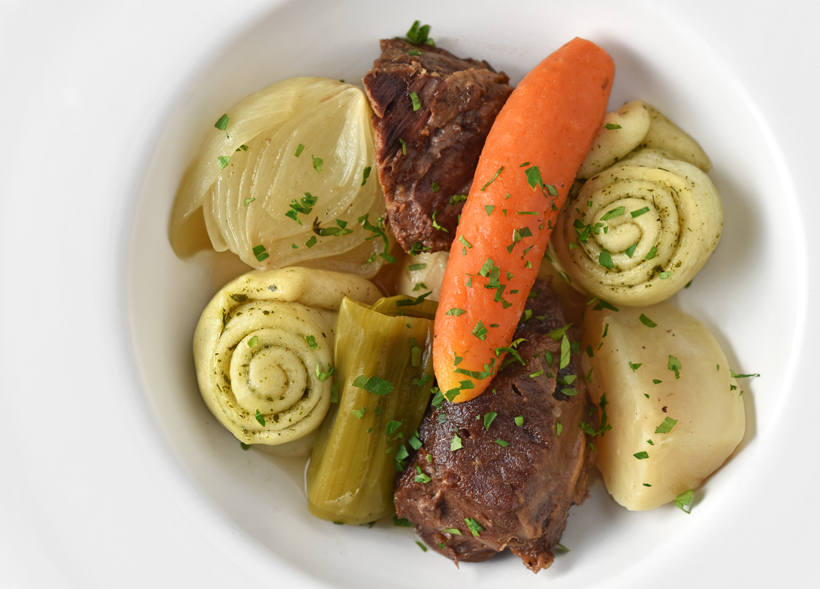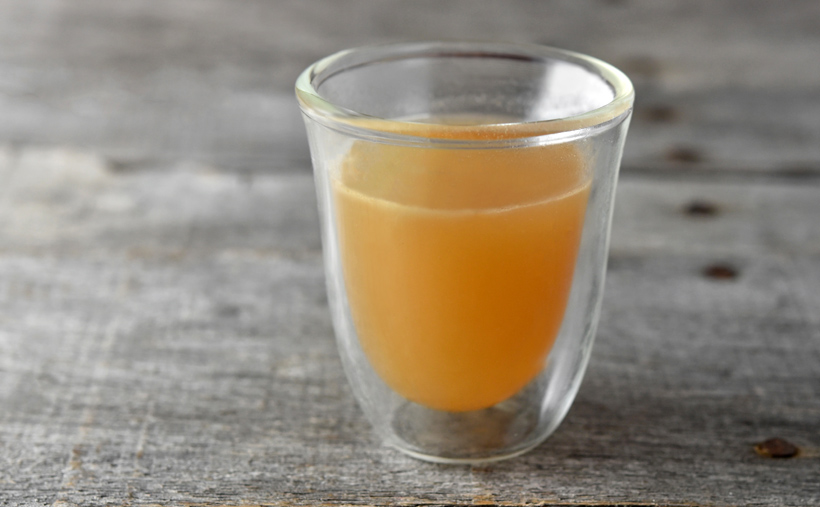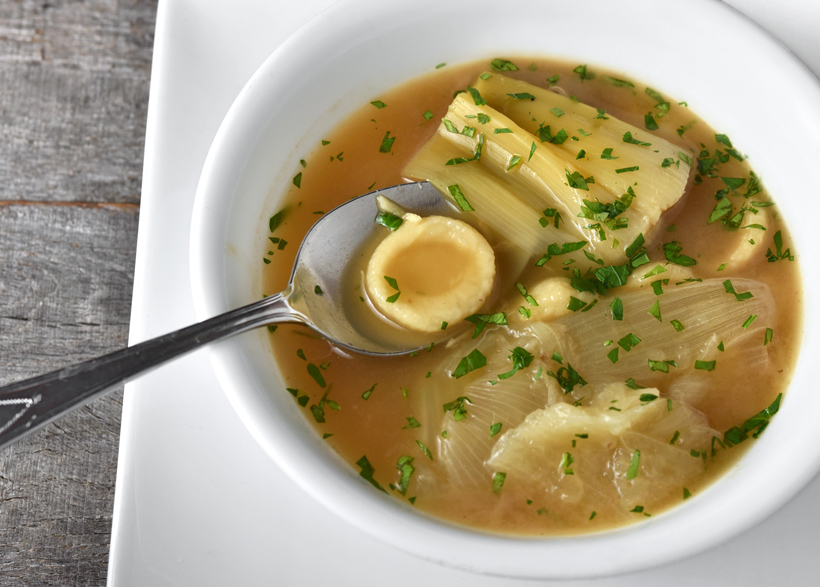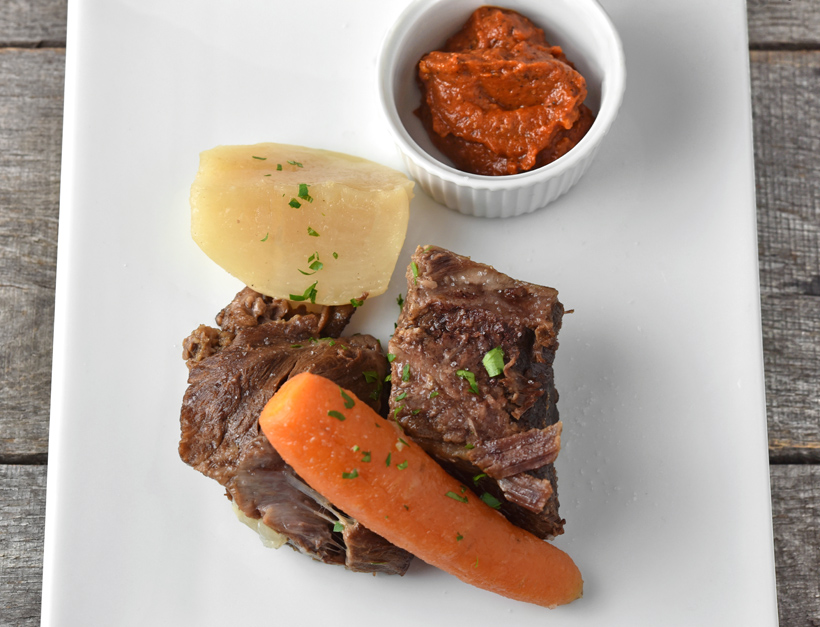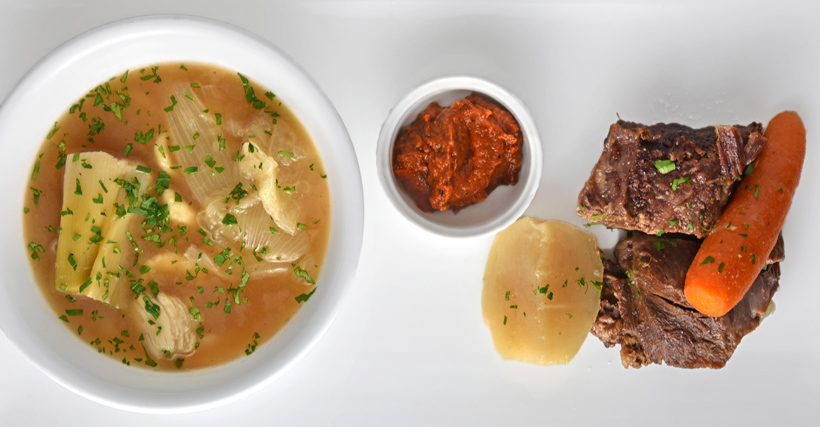During my tour of Moscow’s Danilovsky Market, I stopped at a small fast casual restaurant called Dagestanskaya Lavka to try khinkal, the main dish in Dagestani cuisine. Most of Dagestan’s territory is mountainous, so, traditionally, sheep-farming has been an important activity (though today it’s been supplanted by more lucrative endeavors, such as oil production). The region’s cuisine was perforce shaped by its geography and agriculture, and khinkal is the perfect shepherds’ dish: a stew made with the meat of an animal slaughtered from the flock, water from the nearby mountain streams, and non-perishable, stomach-filling dough made from flour brought from home (or possibly prepared by the wife before the shepherd’s departure). I must also note: khinkal is not to be confused with Georgian khinkali, although they are Transcaucasian cousins.
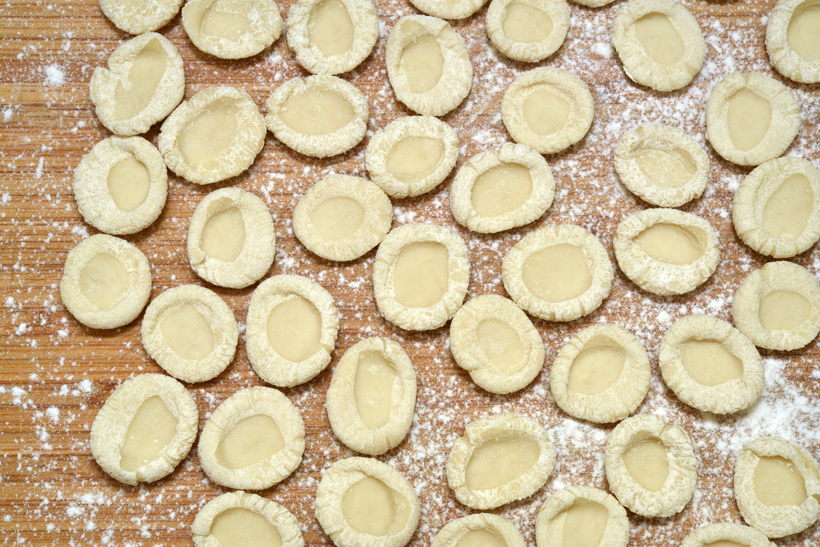
The importance of khinkal in Dagestani culture should not be underestimated. As Zhanna Abueva says in her cookbook, Dagestani Cuisine which I am liberally paraphrasing throughout this introduction, “Khinkal is our everything. It is sacred, native and eternal, like the mountains of Dagestan, like an ancient dagger. […] It is not just a meal, but an occasion to communicate, moreover with absolute psychological relaxation.” Even Dagestani poets have dedicated their works to the humble khinkal, how it was made, how it was eaten, and how it was remembered. Supposedly, when people from Dagestan think about home, they always picture in their minds a plate of khinkal.
“If in Russia or Ukraine a bride’s readiness to be a housewife is measured by her ability to make borscht, then in Dagestan the same can be said about khinkal,” continues Abueva. According to tradition, on the first night of the marriage, friends of the groom can invite themselves over and noisily demand that the bride prepares them khinkal. The bride is forced to demonstrate her skills, lest she pass for inhospitable and incompetent. But even if the khinkal doesn’t taste great, the friends will regardless devour it and praise the cook from the bottom of their hearts, generously thanking her for her efforts. So: totally sexist, but not completely ungrateful assholes.
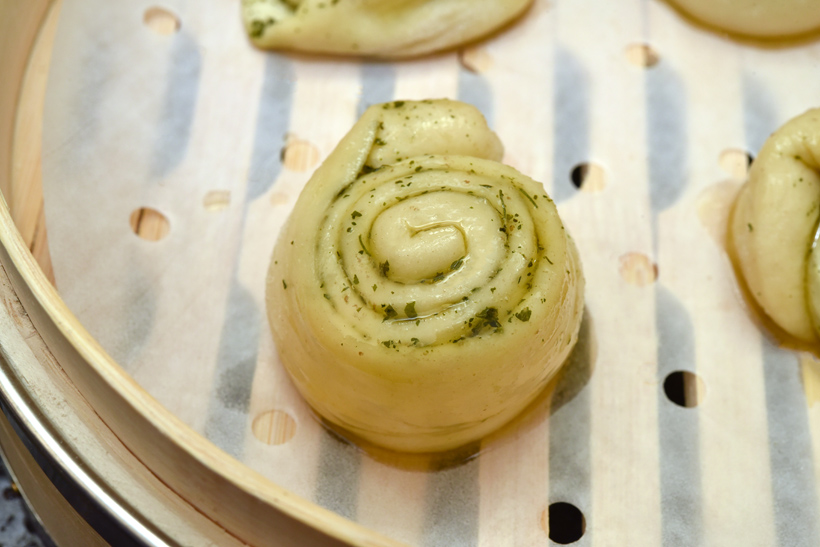
Khinkal is a unifying dish. Dagestan is very ethnically diverse – it is Russia’s most heterogeneous republic – but all its different peoples have their own version of khinkal.
In general, khinkal consists of pieces of unleavened dough made from wheat or corn flour, cooked in broth or water. It’s served on the table with boiled beef or lamb and garlic sauce, mixed with sour cream, kefir, or tomato. There must be plenty of meat, and quantity is more important than the type of meat itself. Lamb is the most traditional, but beef is totally fine too, and chicken or turkey are other acceptable substitutes (Dagestanis are mostly Muslim, so they don’t eat pork). Sometimes, dried meat or Dagestani sausage (a thin, long dried sausage made of lamb or beef) are also added.
Combining these basic elements, here are the most popular versions of khinkal, for each ethnic group:
- Dargin khinkal, aka layered khinkal, is probably the most distinctive. It might therefore sound strange to start with it, but it’s the kind I ate at Dagestanskaya Lavka. This khinkal consists of a soft dough of flour, water, and salt, sometimes with yeast. It’s rolled thin, then generously spread with melted butter and sprinkled with dried fenugreek leaves, called mirkila mura in Dargwa (literally, “bees’ hay”) and also referred to as “nut grass” in Dagestan. The dough is then rolled and cut into chunks that are steamed. Certainly, it’s a bit more involved than just boiling chunks of dough. It’s also occasionally called “German” because of its vague similarity to strudel. Dargin khinkal is generally served with boiled meat, a cup of bouillon on the side, and a sauce of sour cream, garlic, and walnuts (Dargins love putting walnuts in their sauces).
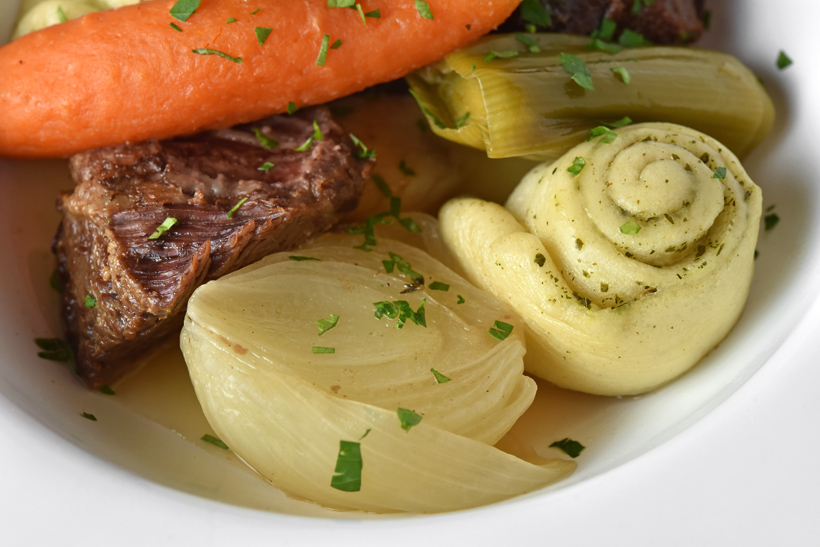
- Laks khinkal is made with a hard dough of flour, water, and salt. The dough is rolled into strands about the thickness of a finger, then cut into small pieces, and flattened with a press of the thumb. Their size may vary from small and delicate to larger and more rustic, shepherd-like; they can look fairly flat (like mine), or more curled up. They are then boiled and served in broth, with boiled meat offered separately. According to the owners of Dagestanskaya Lavka (quoted here), the Laks would often travel in military expeditions and return home with novelty items, which is perhaps why their khinkal resembles Italian pasta – the shape and preparation reminds me of orecchiette, and serving the khinkal in broth is similar to what Italians often do with small pasta forms.
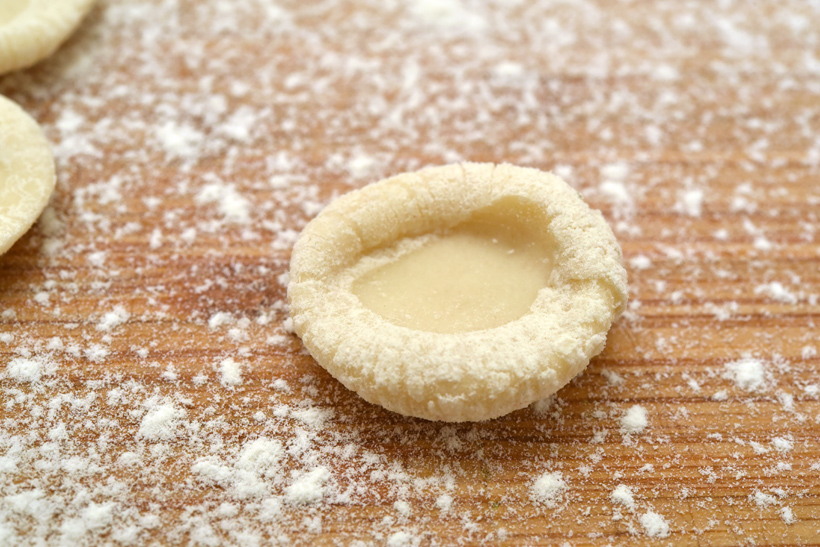
- Kumyk khinkal, aka thin khinkal, is again dough of flour, water, and salt, but slightly softer, rolled thin and cut into squares. It’s boiled in salted water, and often topped with ground meat fried with onion and tomato, and chopped hard-boiled eggs. Sometimes, the ground meat is replaced with fried kurdyuk, fatty lamb tail. Considering that Kumyks are concentrated in the area surrounding Makhachkala, on the western shore of the Caspian Sea, one can imagine that the square pasta shape bears the influence of Kazak beshbarmak, the idea imported from just across the water.
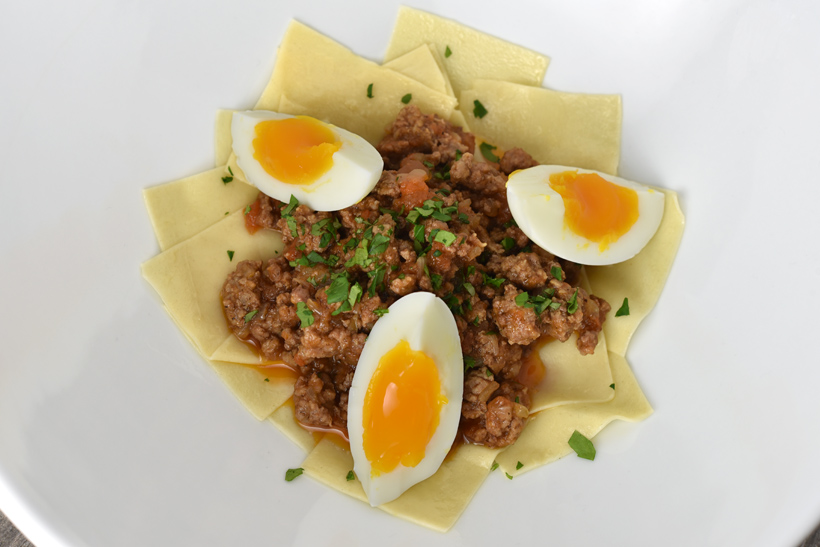
- Lezgin khinkal is fairly similar to Kumyk khinkal – same dough, same shape, with the broth generally on the side. It’s usually served with boiled meat, but sometimes fried ground meat is used instead (similar to what Kumyks do), augmented with water to make something closer to a stew, called kash-khinkal. The majority of Lezgins live near Azerbaijan, and you’ll find similar khinkal recipes in Azerbaijani cookbooks, with the meat either ground or boiled, generally with onion, garlic, and dairy but no tomato.
- Tat khinkal is also reminiscent of Kumyk or Lezgin khinkal (many Tats live near the border with Azerbaijan or in Azerbaijan, along the Caspian shore). One of its particularities is that the dough is made with flour, salt, and boiling water. The boiling water “precooks” the flour, causing some of the starches to immediately swell with water, so that liquid is available to form structure-building gluten. The resulting dough is softer and a bit mealy. It’s then shaped into thin square pasta like Kumyk khinkal. The meat is also similar to the Kumyk meat, but it’s finely diced rather than ground.
- Avar khinkal is a fat khinkal, with a dough made with flour, kefir, salt and baking soda, rolled very thick, cut into squares and boiled in broth. With 200 g of kefir for 1000 g of flour, this sounds awfully heavy! But then, as Avars traditionally live in the mountainous areas of Dagestan, it makes sense that they have the most rustic food. This khinkal is served with boiled meat, the broth coming separately.
Confused? Check out the pictures on Dagestanskaya Lavka’s website, or my own photo below.
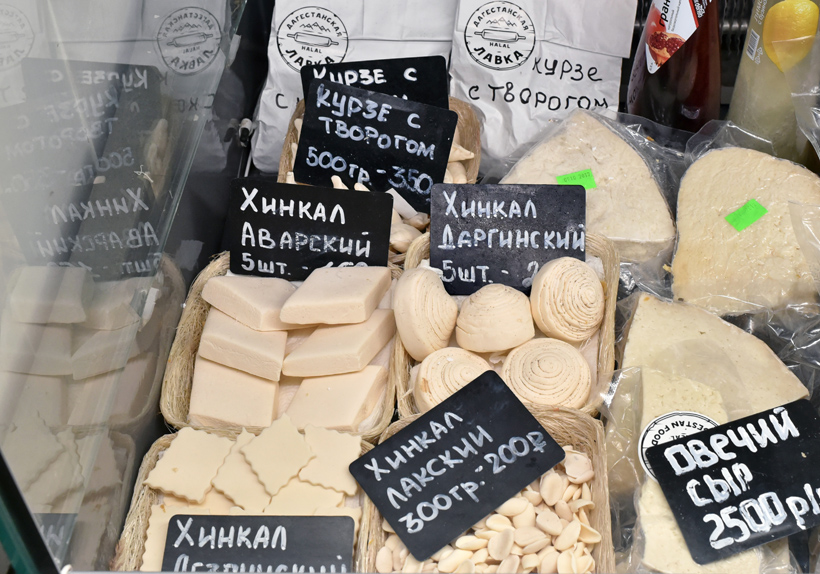
I’ve created my own interpretations of three types of khinkal: Dargin, Laks, and Kumyk. As I’m not a shepherd living in Dagestan’s mountains, I’ve added my own touches – after all, Zhanna Abueva herself mentions that you can add various spices, herbs, greens, and even pomegranate juice to the meat broth. In particular, all these traditional recipes really lack vegetables, so instead of just boiling meat in water, I’ve decided to make a kind of pot-au-feu. This results in both a more complex meat broth, and more colorful and appealing plates.
There are many recipes below, and they form more than one meal. The idea is that you can mix and match, which makes sense considering that in Dagestan, it is not customary to segregate people by ethnicity. First, I provide recipes for tomato-garlic sauce and a couple of meat preparations. I recommend that you make the sauce and pick one of the meats. Then come different sections for my three types of khinkal. Choose one – you wouldn’t eat three bowls of three different pasta forms in one meal, would you??? For each type, I suggest a way to assemble a plate, based partly on Abueva’s cookbook. You don’t have to follow this to the letter. Want to eat Kumyk khinkal with boiled meat rather than ground meat? No problem! Adding boiled eggs to your bowl of Laks khinkal? Why not! Just close your eyes, think about home, and put together whatever plate of khinkal comes to mind.

Part I: The Sauce
Spicy tomato-garlic sauce
Yields over 4 servings
25 g garlic, chopped
15 g butter
2 g smoked paprika
25 g tomato paste
160 g drained canned tomatoes, coarsely chopped
5 g sugar
1 g salt
- In a saucepan over medium heat, sauté the garlic in butter until golden brown. Add the paprika and tomato paste, and cook until the paste starts to brown, stirring constantly.
- Add the canned tomatoes, and simmer for about 2 minutes, until the tomatoes are soft.
- Transfer to a blender or food processor, add the sugar and salt, and process until smooth. Pour into a plastic container, let cool, and refrigerate.
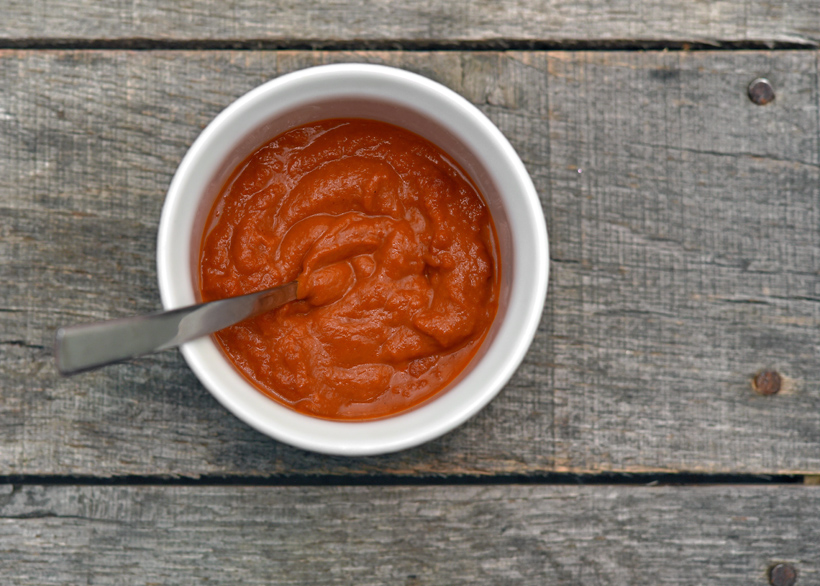
Part II: The Boiled Meat
Short rib fabrication
Yields 4 servings
about 800 g beef short ribs, with bones
transglutaminase (optional, available here)
- Using a boning knife, cut the meat off the short rib bones – you should have about 450 g meat and 350 g bones. Reserve the bones for the beef stock, and the meat for the pot-au-feu.
- If you want to form thicker chunks of meat, sprinkle the pieces with transglutaminase on one side, and stick pairs together. Tightly wrap in plastic, and refrigerate for at least 12 hours.
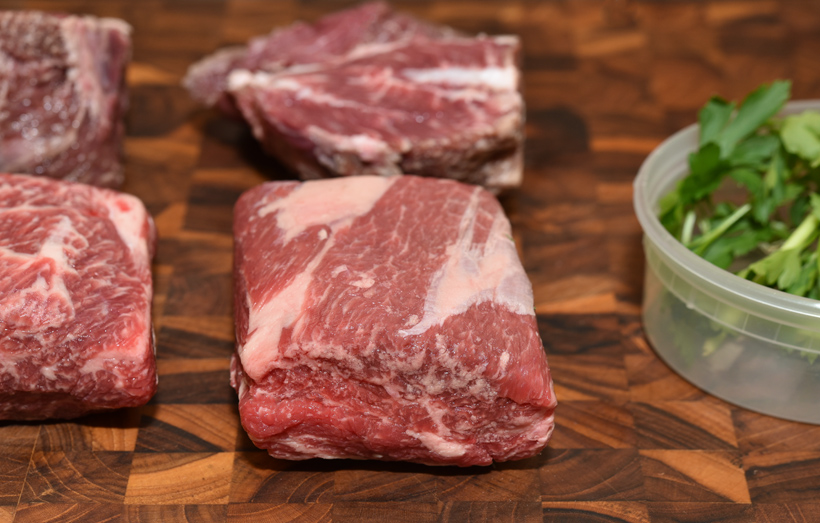
Beef stock
Yields 4 servings (about 700 g)
10 g canola oil
about 350 g beef short rib bones
150 g peeled carrots, large dice
150 g peeled onion, large dice
3 thyme sprigs
700 g water
- In the pot of a pressure cooker, heat the oil on high. Add the bones, carrots, and onion, and sauté until they start to brown, stirring frequently.
- Add the thyme and the water, then close the cooker. Bring to high pressure over high heat, then reduce to low heat and cook for 1 hour.
- Let cool for 30 minutes, then pass through a chinois, discarding the solids. Transfer the stock to a quart container, and refrigerate for at least 12 hours.
- Once cold, remove the congealed fat from the surface, and reserve separately. (I ended up with about 650 g of stock and 40 g of fat.)
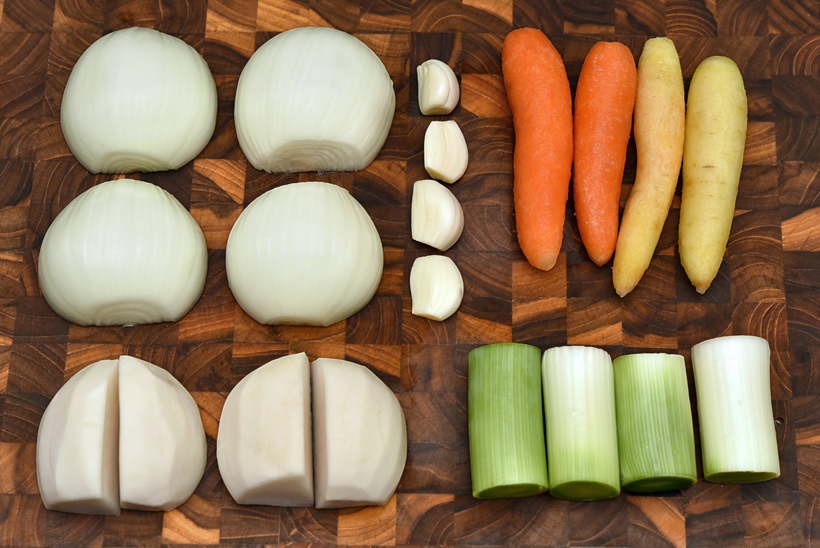
Pot-au-feu
Yields 4 servings
15 g canola oil
about 450 g boneless beef short ribs
about 400 g beef cheeks
5 sprigs fresh thyme
2 sprigs parsley
10 g salt
0.25 g black pepper, ground
650 g beef stock (add more water if you have less)
600 g water
2 medium yellow onions, peeled, halved (about 300-350 g total when ready)
4 garlic cloves, peeled
2 leeks, white part only, halved crosswise, washed very well (about 150-175 g when ready)
150 g peeled carrot, cut into 4 pieces
200 g peeled turnip, cut into 4 pieces
- In the pot of a pressure cooker, heat the canola oil over high heat. Add the beef short ribs and beef cheeks, and sauté until brown on all sides.
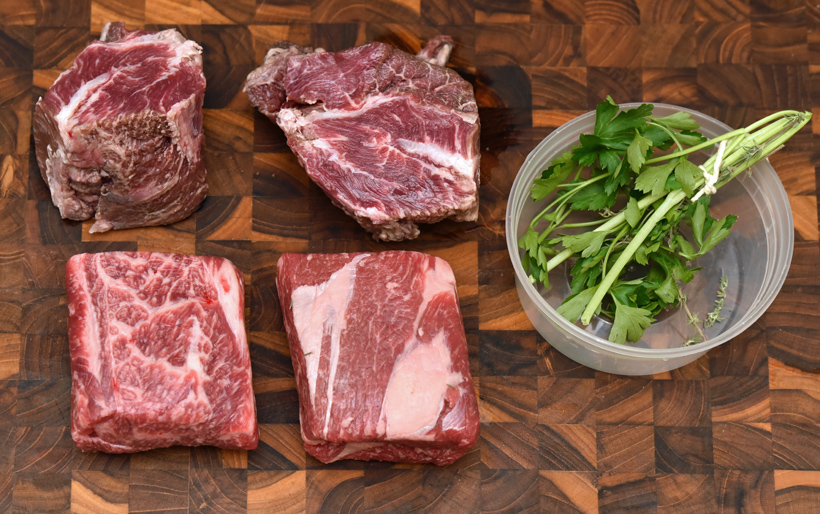
- Tie the thyme and parsley together with butchers twine, and add them to the pot with the meat. Season with the salt and pepper, and top with the stock and water. Close the cooker, bring to high pressure over high heat, then reduce the heat to low, and cook for 45 minutes. Let rest for about 15 minutes, until depressurized. (You can prepare the pot-au-feu up to this point the day before, refrigerate it, and continue the next day).
- Discard the herbs, and add the onions, garlic, leeks, carrot, and turnip to pressure cooker. Return the cooker to high pressure, and cook for 10 minutes. Let rest for another 15 minutes, until depressurized. At this point, the beef and the vegetables should all be very tender; if not, return to high pressure, and cook 5 more minutes. Reserve.

Part III: The Ground Meat
Sautéed ground lamb
Yields 4 servings
500 g ground lamb
15 g canola oil
salt
150 g peeled onion, small dice
3.5 g smoked paprika
230 g peeled and seeded tomatoes, small dice
- In a saucepan over high heat, sauté the ground lamb for 4-5 minutes, stirring frequently, until a lot of the fat has rendered.
- Break down the meat chunks with a spatula, add the onion, and season with salt. Cook for another 4-5 minutes, then stir in the paprika, and cook 1 more minute, still on high heat, stirring constantly.
- Mix in the tomatoes. Switch the heat to low, cover, and simmer for 10 minutes. Remove from heat, and reserve.
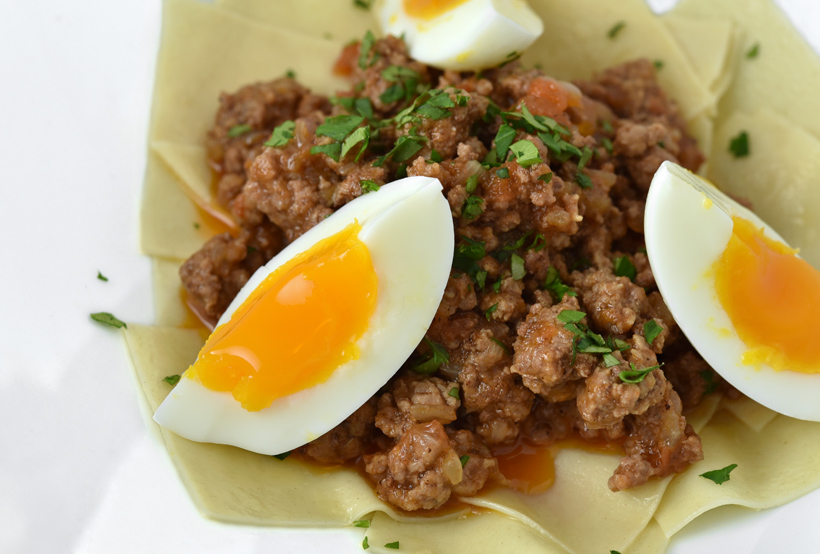
Part IV: Dargin khinkal
Dargin khinkal
Yields 4 servings (16 buns)
110 g water, lukewarm
5.5 g active dry yeast
2 g sugar
200 g bread flour
3 g salt
40 g butter, melted
2 g dried fenugreek leaves
15 g rendered fat (from stock)
- In a small bowl, combine half of the water with the yeast and sugar, and let sit for 10 minutes.
- In the bowl of an electric mixer, combine the flour and salt. Add the yeast mixture, the remaining water, and half of the melted butter, and mix for 2 minutes. Cover and let rise for 1 hour.
- Punch down the dough, and divide into four pieces, 80-85 g each. Roll each piece to a thin rectangle of 18 cm x 20 cm. Brush with the remaining melted butter, and sprinkle with dried fenugreek leaves.
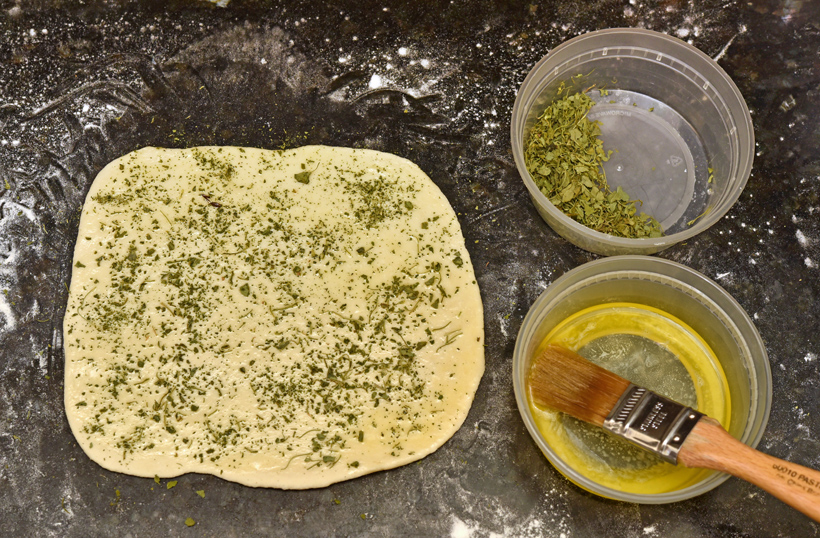
- With the short edge facing you, roll each rectangle into a tight cylinder. (If you roll the dough in the other direction, it’s no big deal, it only makes a minor difference.)
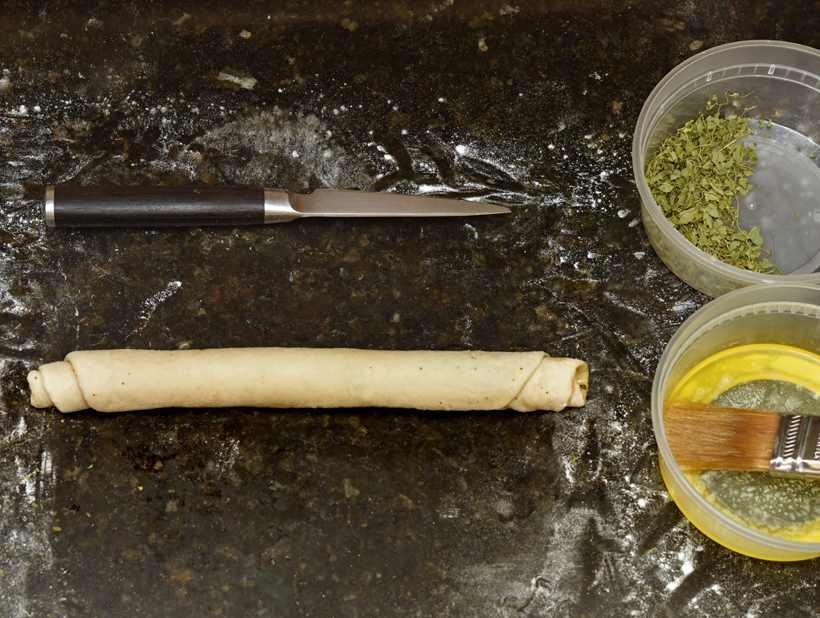
- Cut each cylinder into 4 chunks of equal size, 4-5 cm in length. You might have seen pictures where Dargin khinkal has a more conical shape; if you prefer that, cut the rectangles of dough into into 4.5 cm strips first, then roll each strip into cylinder.

- Line one or more bamboo steamers with parchment paper (I put 4 Dargin khinkal on 25 cm diameter steamer). One by one, place the cylinders onto the steamer, standing vertically, and use your thumb to flatten them down to half of their height. Cover with plastic wrap, and let proof for about 30 minutes at 37 C / 100 F (or slightly longer at room temperature).
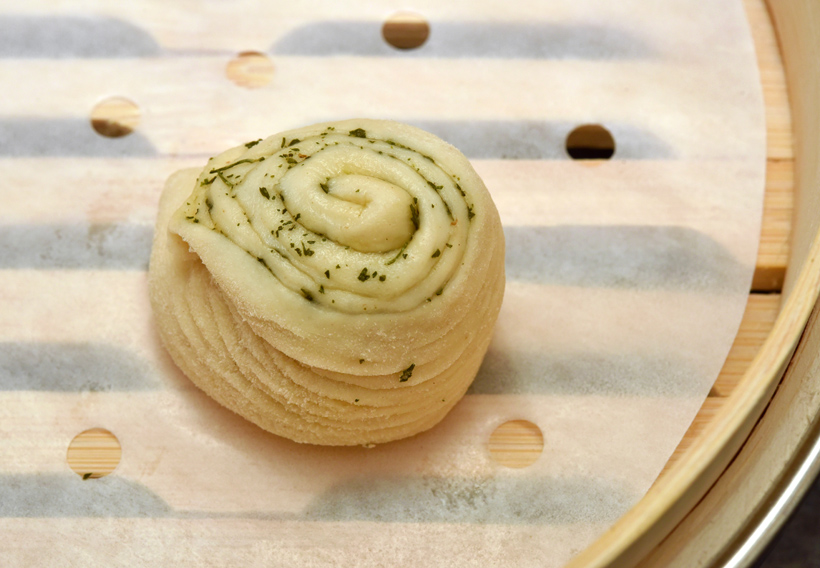
- Melt the rendered fat in the microwave, and brush some on top of the khinkal. Steam for 5 minutes (if you don’t know how to use a bamboo steamer, read this). Brush with some more rendered fat, and serve immediately. If you really must, you can also reserve these khinkal covered, then steam them 1 more minute before serving.
Assembly
Yields 4 servings
pot-au-feu
Dargin khinkal
parsley, finely chopped
spicy tomato-garlic sauce
- Pass some of the liquid of the pot-au-feu through a chinois lined with a paper filter. Pour the filtered broth into cups or small glasses.
- Steam the khinkal as explained above.
- In each bowl, place one piece each of beef short ribs, beef cheeks, onion, garlic, leek, turnip, and carrot, plus two khinkal. Add one small ladle of unfiltered broth, and sprinkle with parsley. Serve with the cups of broth and the tomato-garlic sauce on the side.
Part V: Laks Khinkal
Laks Khinkal
Yields about 4 servings (80 pieces)
150 g AP flour
1.5 g salt
70 g water
- Place the flour, salt, and water into the bowl of an electric mixer fit with the paddle attachment. Mix the ingredients on low speed until combined, scraping down the sides with a spatula, then continue mixing for another 3 minutes. Cover and let rest for 30 minutes.
- Divide the dough into 4 pieces. Using your hands, roll each piece into a 1.5 cm thick, 25 cm long strand.
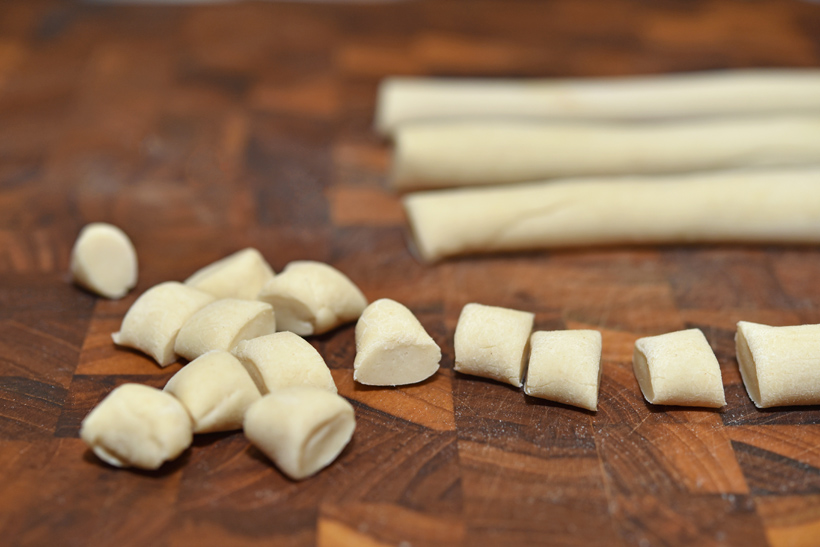
- Cut each strand into 1 cm pieces, and flatten each one with a press of the thumb. Reserve on a lightly floured sheet tray.
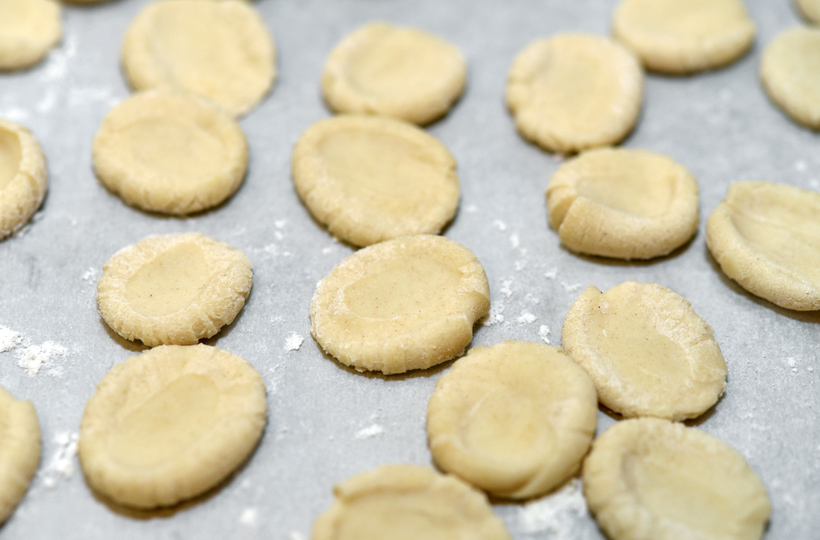
Assembly
Yields 4 servings
pot-au-feu
Laks khinkal
parsley, finely chopped
spicy tomato-garlic sauce
- Pour the broth from the pot-au-feu into a pot, and bring to a boil over high heat.
- Add the Laks khinkal to the broth, reduce the heat to low, cover, and simmer until tender.
- Divide the Laks khinkal and broth between serving bowls, and add pieces of onion, garlic, and leek from the pot-au-feu. Prepare separate plates with one piece each of beef short ribs, beef cheeks, carrot, and turnip. Sprinkle with parsley, and serve with some tomato-garlic sauce on the side.
Part VI: Kumyk khinkal
Kumyk khinkal
Yields 4 servings
200 g flour
2.5 g salt
65 g egg
40 g water
- Place the flour, salt, egg, and water into the bowl of an electric mixer fit with the paddle attachment. Mix the ingredients on low speed until combined, scraping down the sides with a spatula, then continue mixing for another 3 minutes. Cover and let rest for 30 minutes.
- Divide the dough into 4 pieces to proceed in batches, keeping the remaining dough covered with plastic wrap. Using a pasta machine, roll the dough to the thinnest setting. Cut into 3-4 cm squares, and reserve on a lightly floured sheet tray.
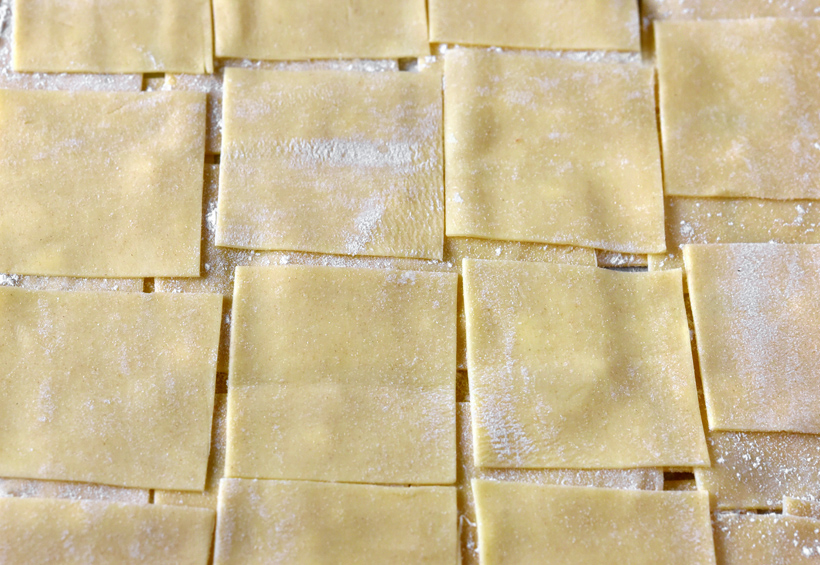
Assembly
Yields 4 servings
salt
3 eggs, room temperature
Kumyk khinkal
25 g butter
sautéed ground lamb
parsley, finely chopped
spicy tomato-garlic sauce
- Bring a pot of salted water to a boil. Remove from the heat, add the eggs, and let cook for 8 minutes – the eggs will be medium-boiled.
- Transfer the eggs to a bowl of cold water, and let cool for a couple minutes. Shell the eggs, and reserve.
- Cook the Kumyk khinkal in boiling salted water for a few minutes, until tender. Drain in a colander, quickly rinse under cold water, then transfer to a bowl and toss with the butter, adding salt if needed. Reserve.
- Gently reheat the sautéed ground lamb in a saucepan or frying pan over low heat.
- Quarter the medium-boiled eggs.
- Arrange some Kumyk khinkal at the bottom of each plate or bowl. Top with some meat, sprinkle with parsley, and garnish with three egg quarters per plate. Serve with the spicy tomato-garlic sauce on the side.
